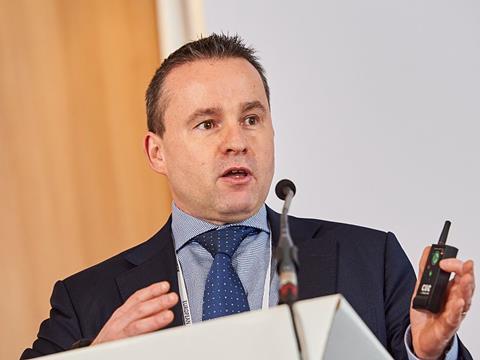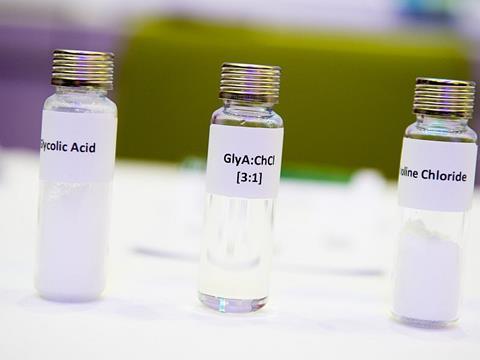
On the occasion of the official completion of the first phase of the PROVIDES project, Bernard de Galembert, CEPI’s innovation director, tells Packaging Europe about the progress of CEPI’s 2050 roadmap, outlining procedures to achieve an 80 per cent CO2 reduction by 2050, and the innovations that emerged from the Two Teams Project.
In 2010, when the EU developed its roadmap towards a low carbon economy, with an overall commitment to decrease emissions by 80 per cent, CEPI decided to make a matching commitment of reducing emissions within the pulp and paper industry by 80 per cent. Of course, the easiest solution to do that would have been to close down capacities in Europe and to relocate them outside of Europe. But we strongly felt that the paper industry should grow in Europe, so the focus was on a decarbonisation effort accompanied with value creation and growth.
In November 2011 CEPI launched the Forest Fibre and Paper Industry 2050 Roadmap for a low-carbon economy, representing the vision for the sector in the next 35 years. It investigates how to achieve an 80 per cent reduction of CO2 emissions and at the same time create 50 per cent more value.
Once the commitment was made, the key question was how to achieve both decarbonisation and growth. Growth would build on the development of the bio economy. Decarbonisation would be achieved through a mix of different measures that would touch on transport, on changing the fuel mix, on growing bio energy, on buying green electricity but also on breakthrough innovation, rethinking the way pulp and paper are made.
Once we identified the breakthrough technologies as being one of the key elements to achieve the decarbonisation effort, in 2012 an internal competition, the Two Team Project was put in place within CEPI to identify what kind of breakthrough technologies would indeed make the difference. It ran over a year, and at the end delivered eight breakthrough technology concepts.
Hydrophobic deep eutectic solvents

The winning Deep Eutectic Solvents concept was described as a truly ground-breaking discovery. It has the potential to revolutionise the pulping process, opening the way to produce pulp with minimal energy, emissions and residues. It can also be used to recover cellulose from waste and dissolve inks and contaminants in paper for recycling.
The European pulp and paper industry came together to start a joint research initiative to further research and elaborate on the DES concept. The Institute for Sustainable Process Technology (ISPT), which had introduced the idea in the Two Team Project, was asked to coordinate the initiative. This is how the ISPT cluster ‘Deep Eutectic Solvents in Papermaking’ was founded in April 2014. The objectives of this project, which is called PROVIDES, are in line with the priorities defined in the forest-based sector value chain by the pulp and paper industry. The objective is to achieve industrial implementation of the technology by 2030.
Hydrophobic Deep Eutectic Solvents exist in nature and allow to dissolve wood into its main components: cellulose, hemicellulose and lignin, without having to resort to the traditional high-pressure process for pulp making.
Prior to the discovery of hydrophobic DESs in 2015, all known DESs had been hydrophilic, which means they dissolve in water, making them unsuitable for removing contaminants from paper pulp, which consists of 95 per cent to 99 per cent water. The hydrophobic DESs currently consist of various ratios of decanoic acid and lidocaine. Decanoic acid is a plant-based substance, which makes it very suitable for use in an environmentally friendly solvent.

The intention is to soon build a pilot to explore the possibility to upscale and really put the economics of making paper with Hydrophobic Deep Eutectic Solvents to the test.
The PROVIDES consortium consists of 20 industrial partners in the pulp and papermaking chain, complemented by ISPT as coordinator, and Technical University Eindhoven, University of Aveiro, University of Twente, CTP and VTT as knowledge partners. Consortium partners come from all over Europe: Austria, Belgium, Finland, France, Germany, the Netherlands, Portugal, Sweden and Switzerland.
On track for 2050
In 2017 a review of the roadmap was released to showcase the progress made in terms of decarbonising. Of course, it is always difficult to assess whether we have been picking the low hanging fruit and whether the further goals will possibly be more challenging to achieve. However, we know that the political pressure will keep growing to the extent that it wouldn't come as a surprise if at some stage industries in general would be required to be carbon-neutral. So far, we are progressing according to the set trajectory in terms of carbon reduction.
I'm quite comfortable in saying that the current sustainability drive in the industry has not impacted on our roadmap. Our industry has been at the forefront of sustainability commitments for many years already, be it when it comes to its feedstock supply and procurement, but also in terms of environmental management systems and social conditions. We want to show that competitiveness and sustainability can go hand in hand. Our regular sustainability reports show constant progress in terms of increasing forest certification rate, certified raw material procurement rate, increasing recycling rates, reducing emissions, reducing impact and reducing the accident rate.
Paper and the plastics debate
Graphic and printing paper use is declining, whereas packaging, tissue and specialty paper segments are growing, and the exploration of new bio-based products presents a way forward.
We illustrated the potential in 2015 with the publication of our ‘Age of Fibre’, that showcased the wide range of products the industry can deliver. Some interesting examples of new concepts incorporating fibre from unexpected places is the Papermilk by Gruppo Cordenos, which includes milk fibre that would otherwise be wasted in the paper process, resulting in a paper with excellent tactile properties, or Schut Papier and Smurfit Kappa's tomato paper, incorporating fibre from stems within the paper.
CEPI believes that carton and paper definitely have chances in a ‘zero-plastics’ or even in a ‘less plastics’ society. This being said, the transition from plastics to non-plastics won't happen overnight. It requires more research and more innovation in the field, and we must make sure that we progress cautiously on this to avoid deceptive claims.
It is difficult to say when these innovations will be ready. It is not just a matter of having a policy in place, and a product ready at the same time. It’s about the economics, the market acceptance and the consumers’ willingness to switch from one material to another. But indeed, this feels like an opportunity for the bio-based sector in general and for the forest industry in particular.
















